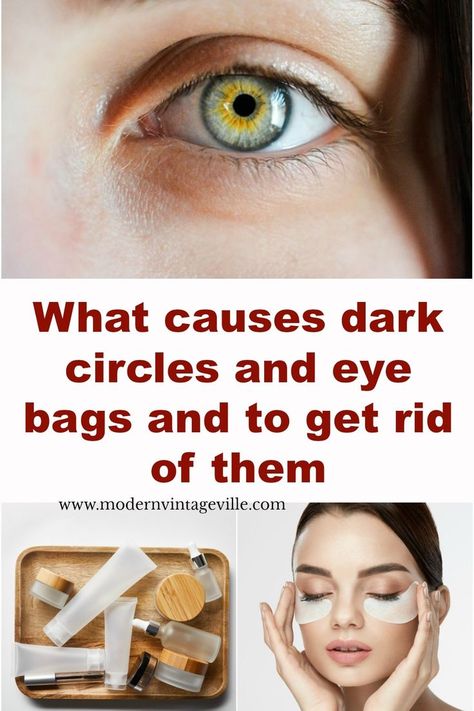Reviewed By:
Are you wondering why you have puffy eyes or how you can make under-eye bags disappear? Good news: Although they can be bothersome, bags under your eyes don’t usually impact vision or health. But if you want to reduce the puffiness around your eyes, there are temporary and long-lasting solutions.
There are several reasons people get puffy eyes, including:
“The most common cause of under-eye bags or puffiness is natural aging,” says Shaun Desai, M.D., a facial plastic and reconstructive surgeon at Johns Hopkins Center for Facial Plastic and Reconstructive Surgery. “Older skin becomes too lax and tends to fall or wrinkle. The muscles and tissues around the eye can also weaken and contribute to the baggy look. This weakening allows the fat surrounding the eye to bulge out, creating that bubble-like appearance.”
There are different approaches to reducing under-eye puffiness, depending on the cause. At-home treatments can temporarily shrink lower lids that are sometimes swollen from fluid pooling in the undereye area.
But, says Desai, home remedies and over-the-counter products can only do so much, “To effectively get rid of under-eye bags that are prominent and permanent, medical treatment is oftentimes necessary. ”
”
If you occasionally wake up with puffy lids, these quick fixes may help. They work to reduce swelling until it naturally subsides over the course of the day.
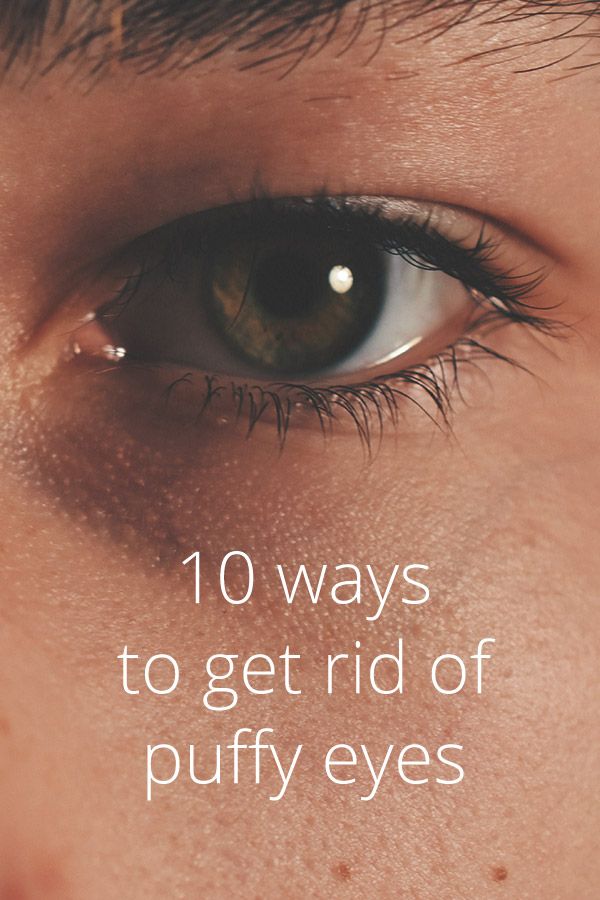 You can also try resting chilled tea bags (caffeinated black tea) on closed eyes.
You can also try resting chilled tea bags (caffeinated black tea) on closed eyes.If you’re fed up with under-eye bags, these medical treatments can improve and even eliminate them:
Nonsurgical options
These noninvasive treatments smooth the under-eye area:
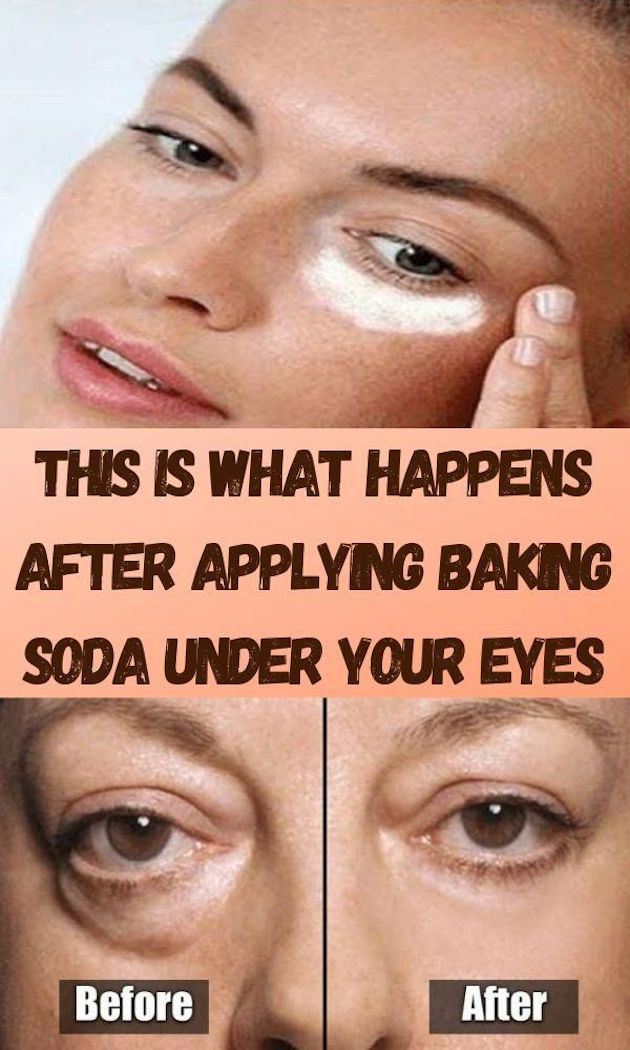 An in-office application of a chemical solution dissolves old skin cells to reveal tighter, brighter skin. Depending on your skin type and sun exposure, results can last a few years.
An in-office application of a chemical solution dissolves old skin cells to reveal tighter, brighter skin. Depending on your skin type and sun exposure, results can last a few years. Surgical option
A lower eyelid lift (blepharoplasty) is an outpatient procedure where the surgeon readjusts the fat in the lower eye area and tightens the muscle and skin to create a smooth appearance. In most cases, a lower eyelid lift gets rid of under-eye bags for life — it’s rare for people to need future touch-ups.
However, says Desai, sometimes patients require multiple therapies to treat under-eye bags, such as combining laser resurfacing with filler or an eyelid lift.
The eye area is a very delicate part of the face. Serious complications can arise if procedures are done improperly. It’s crucial to find a highly experienced, board-certified surgeon who specializes in treatment of the eyelid area.
Stocksy / Design by Camden Dechert
You’d think getting an adequate amount of rest and eating a healthy diet would make under-eye puffiness disappear, but alas, we still see bags underneath our eyes.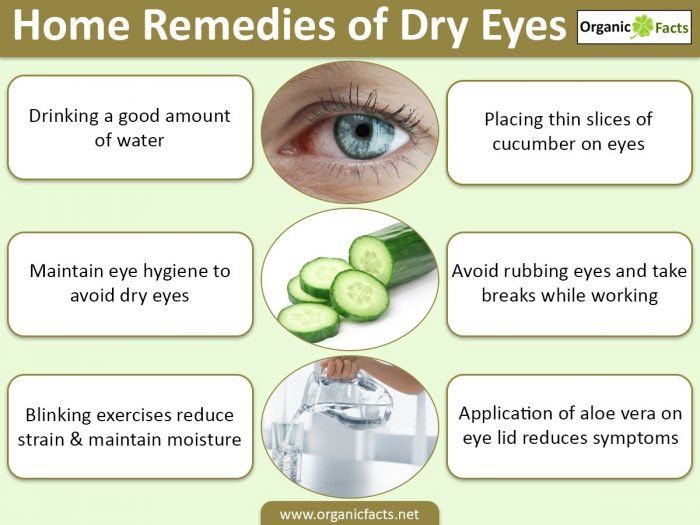 "Under-eye changes are inevitable as we all age (dark or bluish discoloration, depressed appearance, puffiness, bags, etc.)," says board-certified dermatologist Dr. Robert Finney. "And identifying the cause of your under-eye puffiness is required prior to determining how to help treat it."
"Under-eye changes are inevitable as we all age (dark or bluish discoloration, depressed appearance, puffiness, bags, etc.)," says board-certified dermatologist Dr. Robert Finney. "And identifying the cause of your under-eye puffiness is required prior to determining how to help treat it."
"The eyes are areas of highly specialized skin that is vulnerable to several different systems and susceptible to various changes that affect their appearance," says board-certified dermatologist Dr. Corey L. Hartman. "Genetics, fluid retention, allergies, sun exposure, lack of sleep, and poor diet can all have a negative impact on the appearance of the upper and lower eyelids."
So what's the best way to de-puff and get rid of under-eye bags once and for all? Ahead, Hartman and Finney, as well as licensed esthetician Ali Tobia, divulge everything you need to know, including why some eye creams can help.
Meet the Expert

01 of 09
One of our favorite puffy eye hacks uses a tool you already have in your kitchen: spoons. Leave two clean teaspoons in your freezer, and on puffy mornings, simply press them against your eyes for a few minutes. "This can be done with a spoon kept in the freezer (wet it before applying it to each under-eye area for a few minutes) and will help constrict the vessels and reduce inflammation in the area," advises Finney.
02 of 09
While we couldn't do without our morning java jolt, caffeine has also become a star player in skincare products.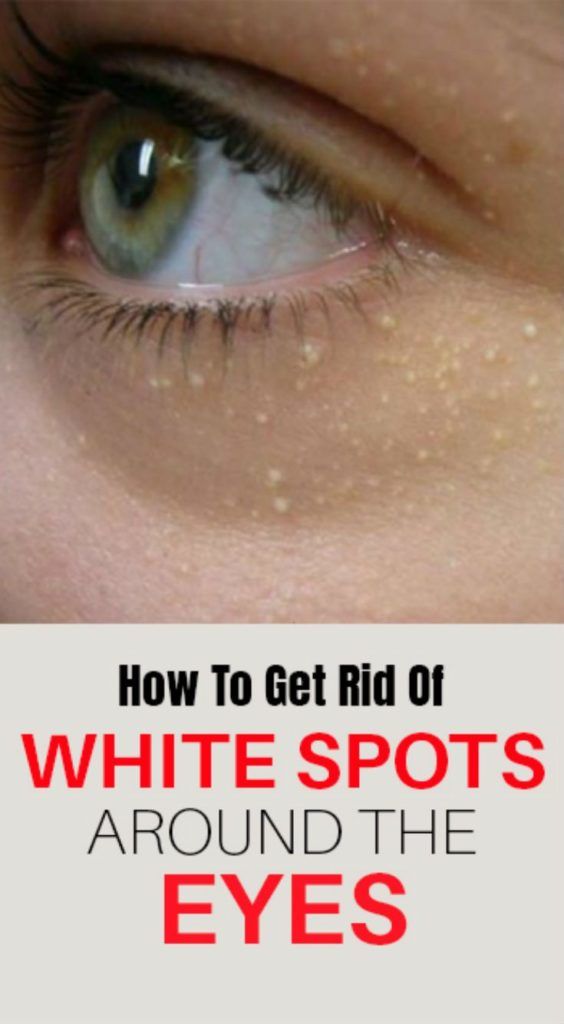 "Eye gels with active ingredients like caffeine, licorice, and other antioxidants are helpful," says Hartman. "Especially if they are cooled before application." Try chilling your favorite caffeine-infused under-eye gels overnight, then apply them in the morning while you have your coffee.
"Eye gels with active ingredients like caffeine, licorice, and other antioxidants are helpful," says Hartman. "Especially if they are cooled before application." Try chilling your favorite caffeine-infused under-eye gels overnight, then apply them in the morning while you have your coffee.
03 of 09
Finney advises that it's crucial to stay hydrated for many health reasons, but one of the more cosmetic reasons is to help keep puffiness at bay. "When you are dehydrated, your body tries to hold on to all the fluid it can, which could contribute to under-eye puffiness." Studies have found that the ideal water intake for those assigned male is 3000 mL, and 2200 mL for those assigned female.
04 of 09
When shopping for under-eye remedies, "Look for a good moisturizing eye cream with ingredients such as green tea, caffeine, niacinamide, peptides and other antioxidants, which can help reduce inflammation and constrict blood vessels to reduce puffiness," advises Finney.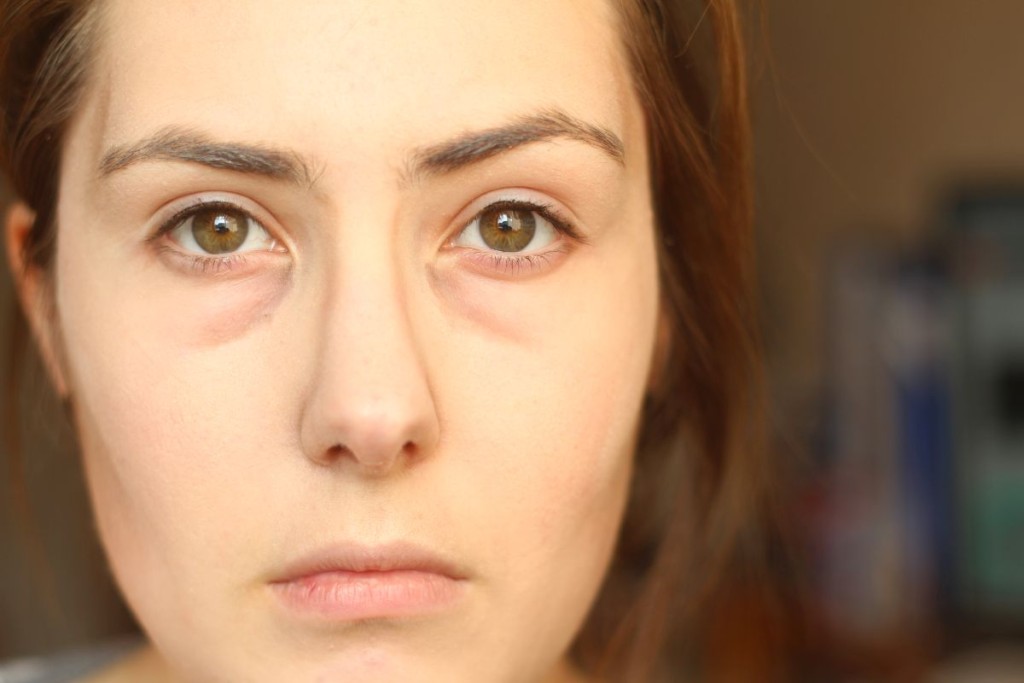
"My absolute favorite is the Alastin Restorative Eye Treatment, which has anti-inflammatory properties but also contains a peptide that stimulates collagen to help improve wrinkles and other signs of aging," he says. "The best part is that it is non-irritating. Many eye creams that promise wrinkle reduction contain retinol, and although retinol is great for anti-aging, it can often be irritating in the eye area, given that the skin around the eye is the thinnest and most sensitive anywhere on the body."
For an all-natural eye cream to soothe and de-puff eyes, turn to cold aloe vera gel, which boasts anti-inflammatory properties. Keep a bottle in your fridge and then apply it just like you would eye cream.
05 of 09
Finney explains, "[The under-eye area] is one area on the body where our natural drainage system (lymphatic system) for excess fluid is not the best, some suffering worse than others. There are different ways to accomplish [drainage] including ice rollers (dual action by helping to massage and directly cool the area), jade rollers, etc.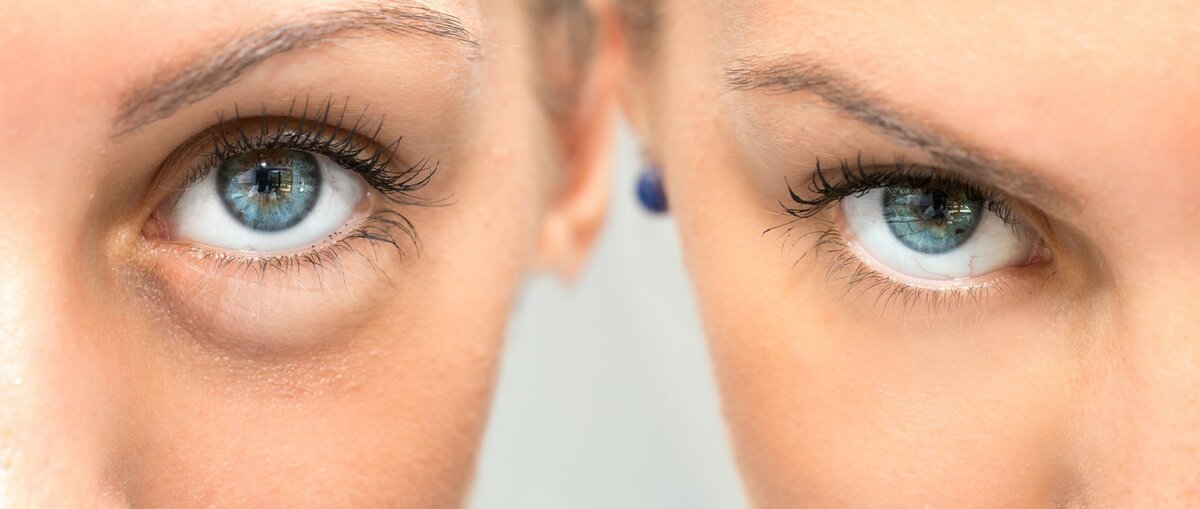 " However, he does warn that "frequently rubbing the skin in this area can result in discoloration and a wrinkled appearance."
" However, he does warn that "frequently rubbing the skin in this area can result in discoloration and a wrinkled appearance."
Hartman echoes this sentiment: "Eye rollers are a way to provide a gentle massage to the area and are quite effective if used regularly, just don’t apply too much pressure or it can trigger more inflammation."
Watch Now: How to Get Rid of Puffy Eyes
06 of 09
Did you know that the way you apply eye moisturizer affects the state of your under-eye area? Tobia says, "Rubbing cream or moisturizer on your eyes can cause it to be puffy. Instead, try lightly tapping the area of your eyes and massaging the pressure points to encourage lymphatic drainage."
Hartman agrees, advising that a simple, gentle tapping motion with your ring finger can go a long way for draining the lymph buildup that causes puffiness.
Tobia instructs: "Starting with your neck to get the drainage started, drag the backs of your knuckles down along the sides of your neck.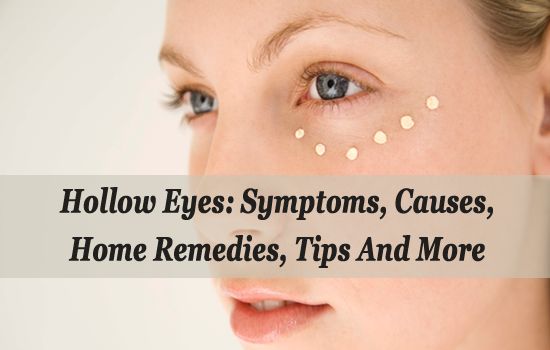 Then, work your way up your face, sweeping your fingertips outward from the center of your face to your ears. When you reach your eye area, you’ll want to make sure that you have your fingertips gliding across the bone just under your eye with a feathery touch." We recommend using a facial oil during this process to avoid tugging on your skin.
Then, work your way up your face, sweeping your fingertips outward from the center of your face to your ears. When you reach your eye area, you’ll want to make sure that you have your fingertips gliding across the bone just under your eye with a feathery touch." We recommend using a facial oil during this process to avoid tugging on your skin.
07 of 09
While we welcome spring with its blooming flowers and pleasant weather, we could do without the allergies that accompany it. "If you have seasonal or other allergies, it is very common to have extra puffiness under your eyes," says Finney. He recommends, "If you notice a seasonal change in your eyes, try an over-the-counter antihistamine such as Zyrtec or Allegra daily during the time of year when your allergies are heightened."
08 of 09
Hartman advises getting eight to 10 hours of sleep per night to help control puffiness. And while you're at it, he says to try and keep your head elevated overnight.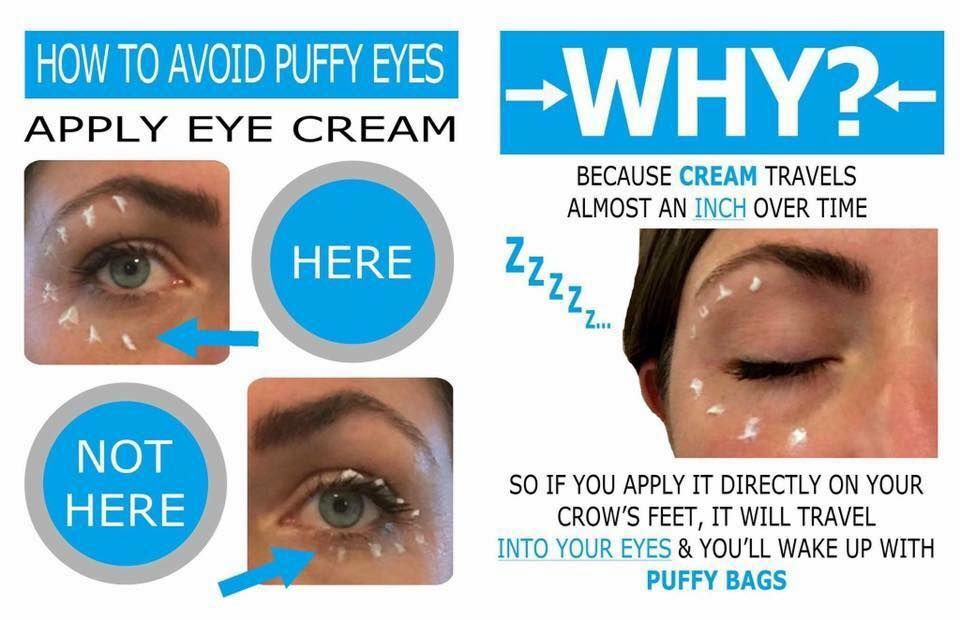
Finney agrees: "If you are sleep deprived, it usually makes puffiness worse," he says. "An often overlooked fix to de-puffing the eye area that can yield amazing results is to simply sleep in a more elevated position. Try adding an extra pillow to help elevate your head and allow the fluid to drain easier at night."
09 of 09
If at-home options are not working for you, consider a professional treatment with a board-certified dermatologist. The best treatment for you may vary based on your individual concern, but in general, Hartman says that the best treatment for under-eye puffiness is typically radiofrequency microneedling.
"Radiofrequency microneedling devices like Lutronic Genius insert tiny needles (after application of a potent numbing cream) that heat the dermal tissue, reduce fat and edema, and tighten the skin to provide a firm, smooth surface," he says. Be wary of medical spas offering this treatment and instead visit a board-certified dermatologist.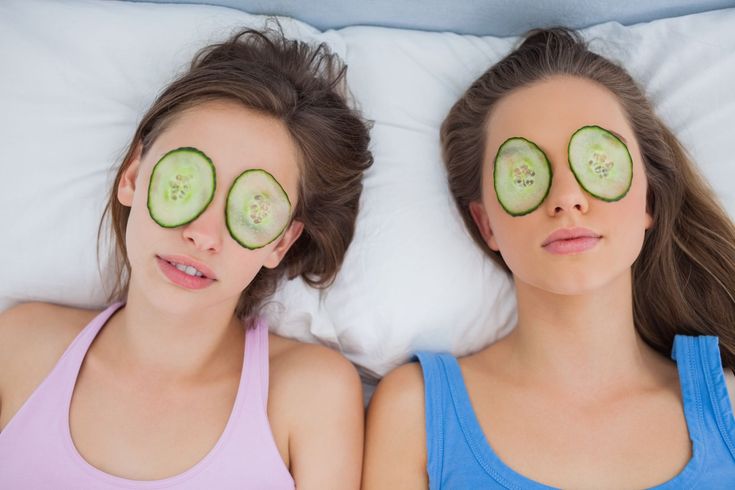
Ask a Dermatologist: What Causes Dark Circles Under Eyes?
Article Sources
Byrdie takes every opportunity to use high-quality sources, including peer-reviewed studies, to support the facts within our articles. Read our editorial guidelines to learn more about how we keep our content accurate, reliable and trustworthy.
Meinders A-J, Meinders AE. [How much water do we really need to drink?]. Ned Tijdschr Geneeskd. 2010;154:A1757.
Penn Medicine. Aloe vera: not just for sunburns. Updated August 2, 2019.
From Marilyn Haddrill; reviewed by Charles Slonim, MD
Puffy eyes and dark circles under the eyes can occur for many reasons, including hereditary facial features, allergies, stress, eye fatigue, and individual skin characteristics such as texture.
While some home remedies, such as cucumber slices, can temporarily relieve puffy eyes, a longer-term solution requires finding out the underlying cause.
The usual swelling around the eyes indicates an excess of accumulated fluid in the surrounding skin tissues. Because the skin around the eyes is the thinnest, swelling and discoloration can be quite noticeable.
But what is the reason for the accumulation of fluid that causes swelling of the eyes?
Puffy eyes are usually due to various factors, including:
Excessive salt intake that causes fluid retention
Allergies, which can cause inflammation and edema
Problems with nasal sinuses
dehydration
Fatigue and lack of sleep
Hereditary features of the face
Although the latter reason does not seem convincing, many people do have swollen eyes due to heredity.
With age, puffy eyes can be partly caused by the fact that the fatty tissue that normally protects the eye inside the bony orbit begins to move forward and fill the space under the eye.
This is because the aging process causes thinning of the membrane or "septum" that normally holds fat in both the upper and lower eyelids. As the membrane thins, the fat bulges forward. It is then that bags or bulges begin to form under the eyes.
When we sleep, we don't blink. And this is one of the reasons why swelling of the eyes develops.
Dark circles may appear under the eyes as a result of stress or lack of sleep.
Blinking is for the eyelids like walking is for the legs. With no movement, some people develop swelling in the lower extremities, which resolves as soon as they start walking, and the leg muscles begin to "pull" the accumulated fluid (edema), releasing it back into the bloodstream.
The same thing happens with the eyelids. Closed eyelids that do not blink during sleep can swell in some people who have a tendency to this. Therefore, in the morning you can wake up with very swollen and swollen eyelids.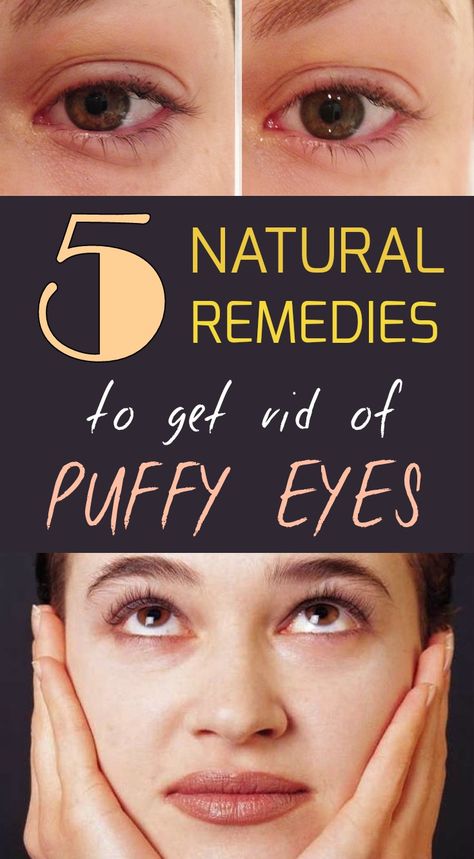 After you open your eyes and start blinking, some of the swelling will subside in about an hour.
After you open your eyes and start blinking, some of the swelling will subside in about an hour.
When this happens unexpectedly, swelling of the eyes sometimes indicates the presence of an illness.
For example, people with thyroid problems may develop swelling of the tissues and muscles around the eyes. In addition, bulging eyes can be a symptom of a thyroid disorder known as Graves' disease.
Eye allergies associated with conditions such as hay fever can also cause eye swelling. Other types of allergies, such as reactions to certain foods or chemicals, can cause eyelid swelling.
During an allergic reaction, some cells in the body release a chemical called histamine, which has many adverse effects on body tissues, including leakage of fluid from blood vessels. These fluids linger in the surrounding tissues, causing swelling.
Swollen, swollen eyelids and dark circles under the eyes may occur with eye infections eg conjunctivitis In this case, swelling of the eyes is caused by inflammation associated with an eye infection that directly affects the eyelids.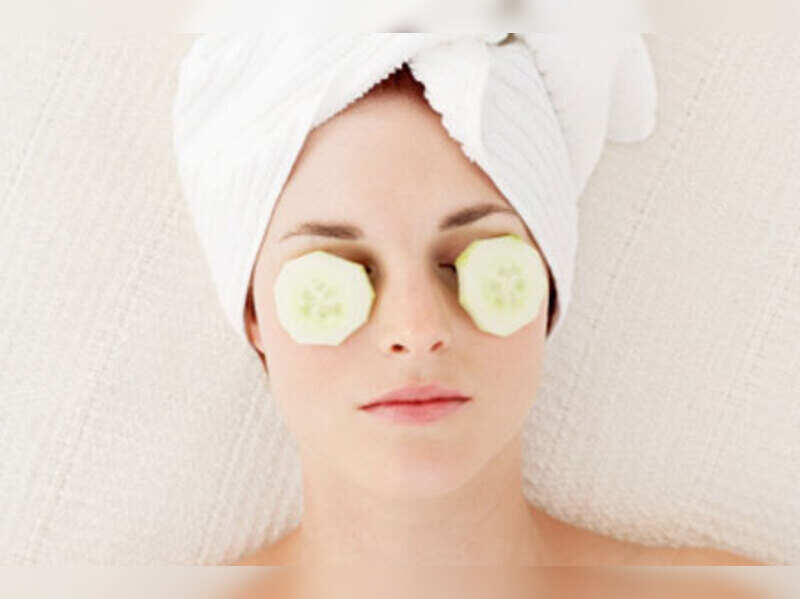 In addition, general swelling and puffiness can cause dry eyes.
In addition, general swelling and puffiness can cause dry eyes.
Systemic diseases, including kidney failure, also lead to a general swelling throughout the body, including around the eyes.
To find the best solution for puffy eyes and dark circles, it is important to identify the root cause.
If your mother or father has swollen eyes, you may have inherited this trait from them. In such a case, cosmetic surgery may be considered to reduce the swelling.
Puffy eyes due to aging are also likely to require cosmetic surgery.
You may want to discuss with your optometrist or plastic surgeon some of the options available for eyelid problems. These options include chemical peels, laser skin resurfacing, certain prescription skin treatments, and an eyelid surgery known as blepharoplasty.
Blepharoplasty removes excess fat and skin from the upper and lower eyelids and tightens the skin and muscles to reduce puffiness and wrinkles.
The following may temporarily reduce swelling around the eyes:
Use eye drops for allergy-related irritation, if applicable
Drink plenty of fluids to stay hydrated
Cold compresses for swollen eyelids
Apply cucumber slices or chilled tea bags to closed eyes
Use creams and other products specially designed for the skin around the eyes
Reduce the salt content in the diet
Eat foods rich in potassium, such as bananas, to eliminate excess fluid in the body
Splash cold water on the face and eyes
Sleep and rest as much as possible
Creams and ointments used to reduce eyelid swelling often contain phenylephrine, a drug that constricts blood vessels. It can have a double effect on swollen eyelids.
First, if dark circles are caused by a visible network of blood vessels under the thin skin of the eyelids, then vasoconstriction can reduce darkening.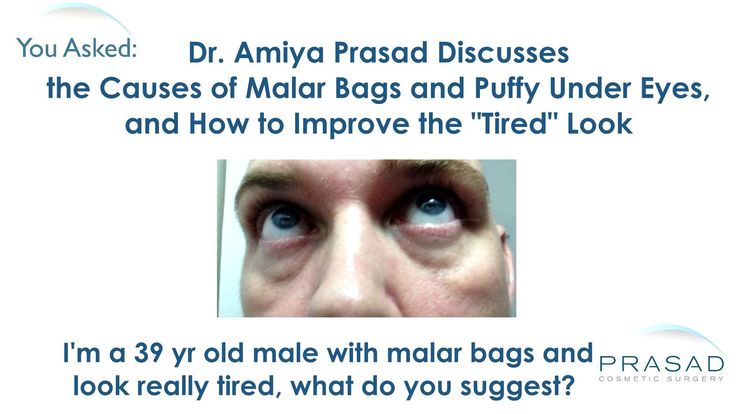
Second, vasoconstriction can reduce the chance of fluid leaking out of a blood vessel, which will reduce swelling.
However, be careful when applying such products around the eyes. If accidentally splashed into the eyes, they can cause a severe inflammatory reaction known as chemical conjunctivitis. If this happens, contact your optometrist or doctor immediately.
Page published on Tuesday, November 10, 2020
Contents:
➦What are the main causes of puffy eyes and panda effect?
➦ Why do my eyes swell when I wake up?
➦Quick relief from puffiness under the eyes
➦Professional and drugstore products
➦Unable to remove puffiness? Hide her!
➦Does puffy eyes mean I have some kind of disease?
➦ How to treat eyes with puffiness
➦ The main thing is not to be discouraged, puffiness will definitely pass!
Our sympathetic nervous system reacts quite quickly to excessive stress.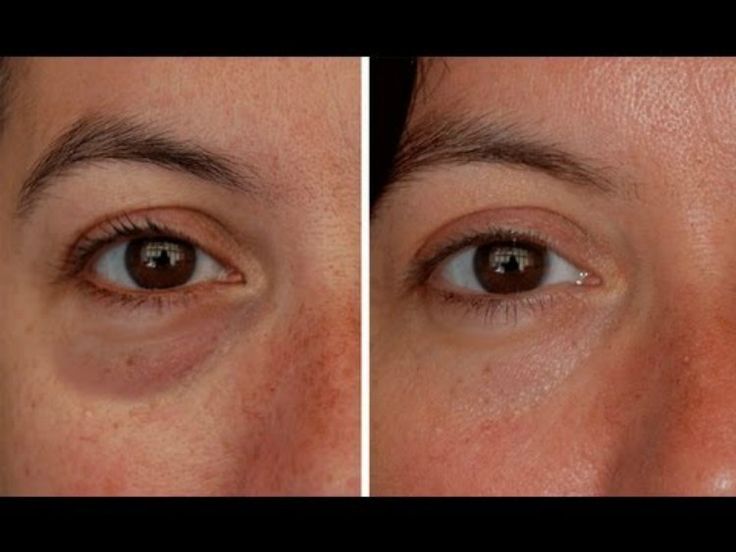 In an effort to protect us from the pathogen and perform an emotional reset in response to any strong adrenaline rush, it irritates the tear ducts inside the eye. An irritated canal provokes a copious release of tears, as well as redness of the face and swelling. Gradually, the heart rate returns to normal, the level of adrenaline decreases, but the puffiness from the eyes does not go away so easily. It turns out that swelling is caused by excessive tension of the channel, and you yourself provoke it by trying to wipe your eyes from tears with your hands or any other means at hand.
In an effort to protect us from the pathogen and perform an emotional reset in response to any strong adrenaline rush, it irritates the tear ducts inside the eye. An irritated canal provokes a copious release of tears, as well as redness of the face and swelling. Gradually, the heart rate returns to normal, the level of adrenaline decreases, but the puffiness from the eyes does not go away so easily. It turns out that swelling is caused by excessive tension of the channel, and you yourself provoke it by trying to wipe your eyes from tears with your hands or any other means at hand.
Tears are not the main cause of puffy eyes, but they provoke an excessive accumulation of fluid in the tissues of the skin. Since the skin around the eyes is very thin, when they swell, they form swellings that become visually noticeable. But why does fluid accumulate at all, forming a swelling of the eye?
Swollen eyes usually result from a variety of factors, including:
✦ Fluid retention
✦ Allergic reaction in the form of hay fever
✦ Problems with the nasal sinuses and a runny nose
✦ dehydration
✦ Fatigue and lack of sleep
✦ stress
✦ A large number of tears
✦ ACTION
✦ Ultimately Persons
Unfortunately, many people suffer from puffiness around the eyes due to hereditary factors that are inherent in their face type.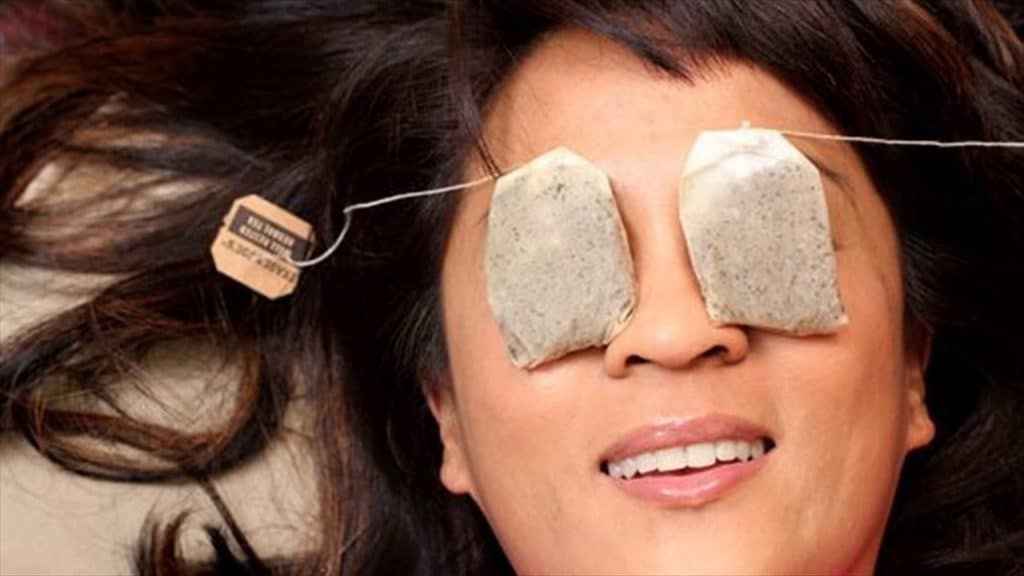 Swelling under the eyes can be the result of age-related changes in adipose tissue. It is usually located around the bony part of the orbit and protects the eyeball from damage. With age, it begins to move forward and fill the spaces under the eye. These changes can only be stopped surgically or by a cosmetologist using special injections.
Swelling under the eyes can be the result of age-related changes in adipose tissue. It is usually located around the bony part of the orbit and protects the eyeball from damage. With age, it begins to move forward and fill the spaces under the eye. These changes can only be stopped surgically or by a cosmetologist using special injections.
This process is almost inevitable, but at a certain age you can influence it with the help of cosmetics and procedures. It occurs due to tissue aging and thinning of the membranes that hold fatty deposits that accumulate on the upper and lower eyelids. As the membrane becomes thinner, the fat expands and moves forward. This causes puffy eyes, dark circles and bags under the eyes.
For some, this fact may be surprising, but during sleep we do not blink. Our eyes are tightly closed and under the eyelids there is a chaotic movement of the eyeball. Unfortunately, some people may develop puffy eyes after prolonged sleep. The process of blinking is very similar to walking or playing sports. When you are not moving, your limbs may swell, which causes significant discomfort. As soon as you begin to make movements, the fluid in the body accelerates and is distributed evenly throughout it, so the swelling goes away. A similar action occurs with the centuries.
The process of blinking is very similar to walking or playing sports. When you are not moving, your limbs may swell, which causes significant discomfort. As soon as you begin to make movements, the fluid in the body accelerates and is distributed evenly throughout it, so the swelling goes away. A similar action occurs with the centuries.
Being in a closed position during sleep and not moving the eyelids can potentially swell in some people who are prone to this problem. So you may wake up in the morning with unusually swollen eyelids. When you wake up and start blinking, some of the puffiness will gradually go away. Dark circles under the eyes can form due to stress or lack of sleep.
There are too many reasons that cause us to cry, and to keep them in ourselves is not only harmful, but it also does not always work out. What to do if, after uncontrollable sobbing, you urgently need an important event? Or did you wake up in the morning with puffiness under your eyes, and two hours later you have to go to work and have an important meeting? There is an exit.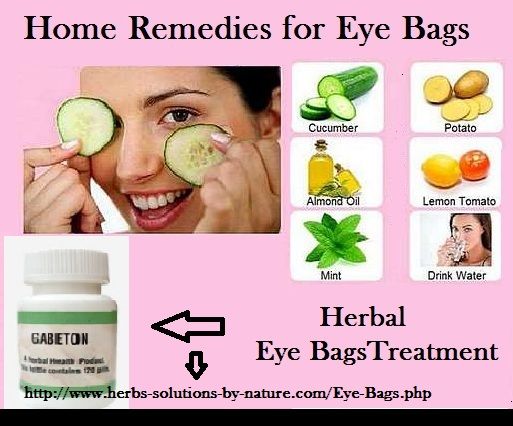
Lightly tap or massage the area to stimulate blood flow
You can increase blood flow to the affected area by gently tapping or massaging around the eyes:
 This helps drain the inflamed area.
This helps drain the inflamed area.
More in Eye Care
Some brands of professional cosmetics produce special eye creams, one of the effects of which is to relieve fatigue and eliminate puffiness. You can pick up such products in the Fitomarket "Face Care" section of the online store. Regular intake of vitamin E will help restore skin elasticity, smooth wrinkles and get rid of swelling in the eye area.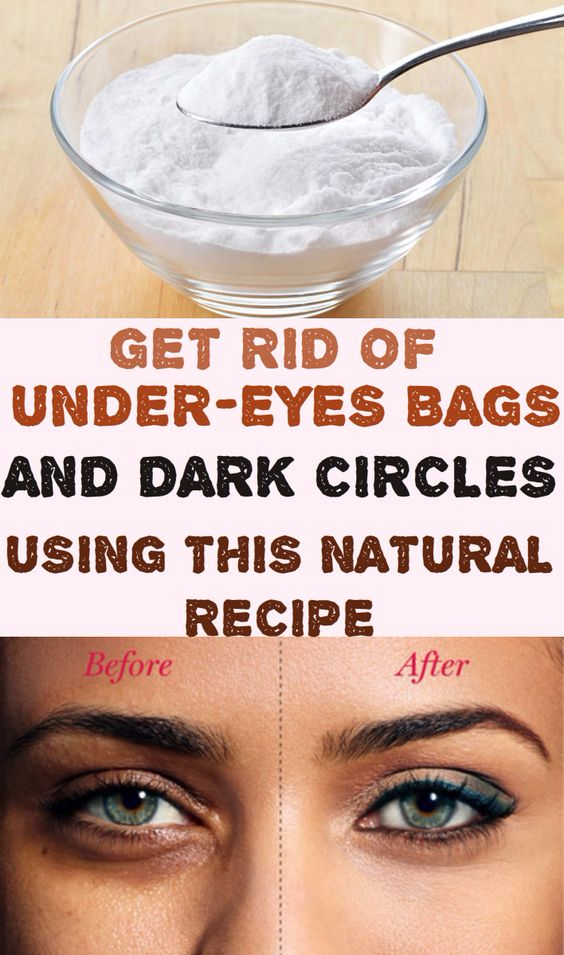 In addition, you can try massage and various types of eye exercises. They will improve blood circulation and can speed up the process of eliminating edema.
In addition, you can try massage and various types of eye exercises. They will improve blood circulation and can speed up the process of eliminating edema.
Eye drops are another way to reduce puffiness in the eyelids. They can be used to relieve any symptoms, from dryness to replenish natural tearing. There are also vasoconstrictors that can help with the redness that invariably comes with crying or allergies. To avoid further irritation, try choosing preservative-free solutions containing fewer synthetic additives. Most formulas are not recommended for contact lens wearers, so read labels carefully and consider removing lenses before use.
If you happen to have witch hazel lying around in your first aid kit. Then you should know that this astringent is great for inflammation and redness. This is a good choice of natural ingredient to combat puffy eyes. For a quick result, apply witch hazel to a cotton pad and apply it to the eye area for 5-10 minutes.
Among professional skin care products, patches under the eyes are considered a panacea in this matter.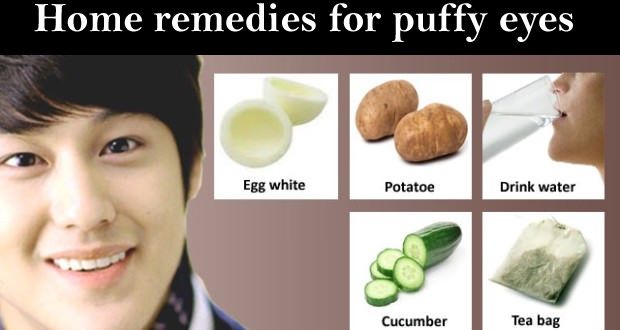 Thanks to natural extracts of green tea, aloe juice or other additives, they improve blood microcirculation, relieve inflammation and puffiness. Be sure to make sure that the package with patches indicates the presence of a draining effect, which is responsible for removing swelling from the eyes.
Thanks to natural extracts of green tea, aloe juice or other additives, they improve blood microcirculation, relieve inflammation and puffiness. Be sure to make sure that the package with patches indicates the presence of a draining effect, which is responsible for removing swelling from the eyes.
Again, cooling the eye area soothes the skin, stimulates the lymphatic system and constricts the blood vessels. Try chilling your favorite face cream or eye patch before applying. Then the effect will be stronger, and you will feel a pleasant coolness during the procedure.
The skin under the eyes may swell or darken after crying. Possible consequences of a tantrum are also redness around the nose or other spots on the face. A good concealer will help mask these obvious signs and give you a fresh look through color correction.
Look for a green concealer that will successfully neutralize redness. Green is the opposite of red on the color wheel, causing the two colors to cancel each other out.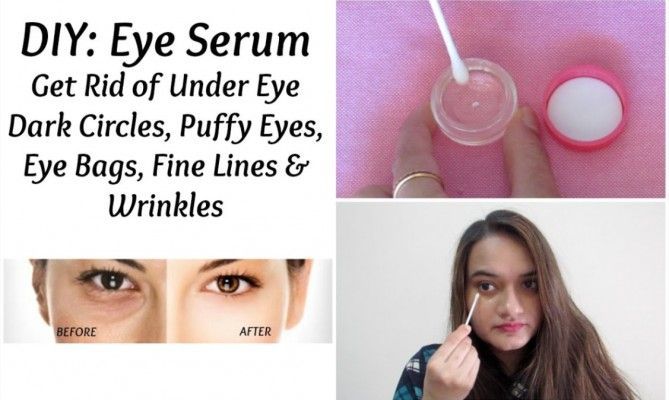 You can apply the concealer to the affected areas and blend well with your fingers or a cosmetic blender.
You can apply the concealer to the affected areas and blend well with your fingers or a cosmetic blender.
Another distraction that can help hide puffiness is dark blue eyeliner. It has long been used to emphasize the whiteness of proteins. Narrowline is a technique that is similar to waterline tracking. It is sometimes referred to as "invisible eyeliner" because it mimics the natural dark area on the lash line.
You can also use pink eye shadow or blush. Pink color elsewhere on the face can reduce redness around the eyes and nose. To do this, try applying blush on your cheeks and bright lipstick on your lips. Apply blush to the cheek area after applying concealer and foundation.
If your eyelids have never been swollen before, and now you notice swelling that has arisen for no apparent reason, this may be a sign of a serious health problem. For example, patients with hypo- and hyperthyroidism may suffer from a general swelling of tissues and muscles.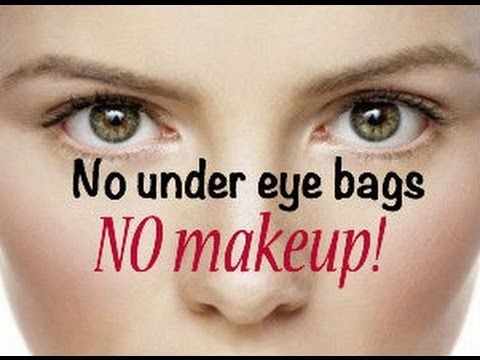 In addition, bulging eyes can signal a serious thyroid condition known as Graves' disease.
In addition, bulging eyes can signal a serious thyroid condition known as Graves' disease.
One of the symptoms of an allergy may be watery eyes, itching and swelling. Typically, such reactions occur on certain foods or chemicals. Allergies have a wide range of symptoms, including a runny nose, cough, and shortness of breath. During an allergic reaction, certain cells in the body release a chemical called histamine. Which can provoke an outflow of fluids from the blood vessels, which will lead to swelling of the surrounding tissues, including the appearance of bags under the eyes.
Puffy eyelids and dark circles under the eyes can occur if you have an eye infection such as conjunctivitis. In some cases, inflammation due to dry eye syndrome also causes swelling. Kidney failure and other systemic diseases can cause swelling throughout the body, including around the eyes.
If your eyelids are sore or sensitive to the touch, the cause is most likely an infection, cyst, or stye.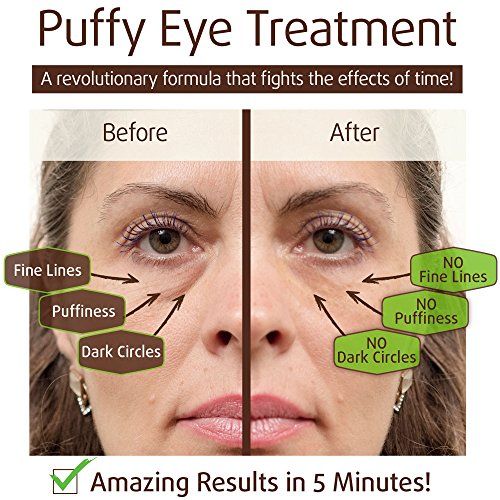 It is important to determine the cause of a swollen eyelid, as treatment options depend on what is causing it.
It is important to determine the cause of a swollen eyelid, as treatment options depend on what is causing it.
✅ Cyst
If your upper or lower eyelid is swollen, it could be a cyst or a chalazion. The chalazion usually swells in the middle part of the eyelid. These cysts may disappear within a few weeks and some will turn into a hard lump.
Treatment: for relief, press a damp, heated cloth, heating pad, or boiled egg against the eye. Heat helps with oil secretion and blockage of blood vessels and skin. You can do this four to five times a day. If the cyst persists, see your doctor.
✅ Barley
Styes are formed due to an infection at the base of the eyelid near the eyelashes. It can be internal or external, but often appears as a well-defined red bump. Once the pus comes out of the stye, your eye will usually get better.
Treatment: A warm compress can be used to facilitate and speed up healing. It usually goes away after a few weeks.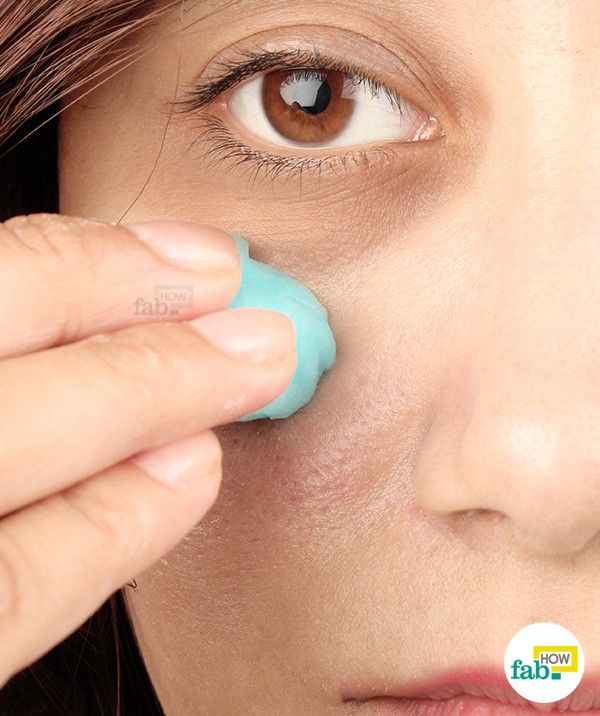 Avoid wearing makeup during a stye as this can cause reinfection.
Avoid wearing makeup during a stye as this can cause reinfection.
✅Conjunctivitis
Pink eye is caused by a bacterial, viral or allergic infection that causes inflammation on the surface of the eye. It can start in one eye and spread to both. Often, pus or sticky deposits appear on the eyelashes and in the corners of the eyes.
Treatment: you can clean sticky and crusty eyelids with warm water and cotton. The eye may heal on its own without treatment. Avoid touching your eyes during this time and keep your pillowcases clean. Avoid eye makeup and contact lenses.
These methods will help relieve the symptoms that occur after a prolonged tantrum, accompanied by sobbing. They can also help recognize other causes of puffy eyes and distinguish between heavy tears and a serious condition. In addition to controlling the outward signs of a tantrum, it is important to understand that self-care and love are important during times of sadness or stress.